When it comes to annoying bugs, few insects are more annoying than mosquitoes, but right up there with them are flies. When you have one or more flies in your home, they head for your food or drink, and buzz around you incessantly.
But there is good news! You don’t necessarily need to depend on chemical insecticides or run after them with a fly swatter to keep your home free of flies. Some beautiful and fragrant houseplants will repel flies.
Then there are fly bites. Do flies bite? Yes, they sure do! Among the approximately 120,000 fly species, there are some that bite both animals and humans to feed on blood. In fact, sand flies, deer flies, horse flies, black flies, and stable flies are just a few known to bite humans.
Here is my list of the 11 best plants that repel flies, and a few are herbs that are perfect for the kitchen and for cooking, while others make lovely decorative houseplants for your living space.
Best Plants That Repel Flies
Here is a list of the best plants that are natural insect repellents.
1. Basil (Ocimum basilicum)
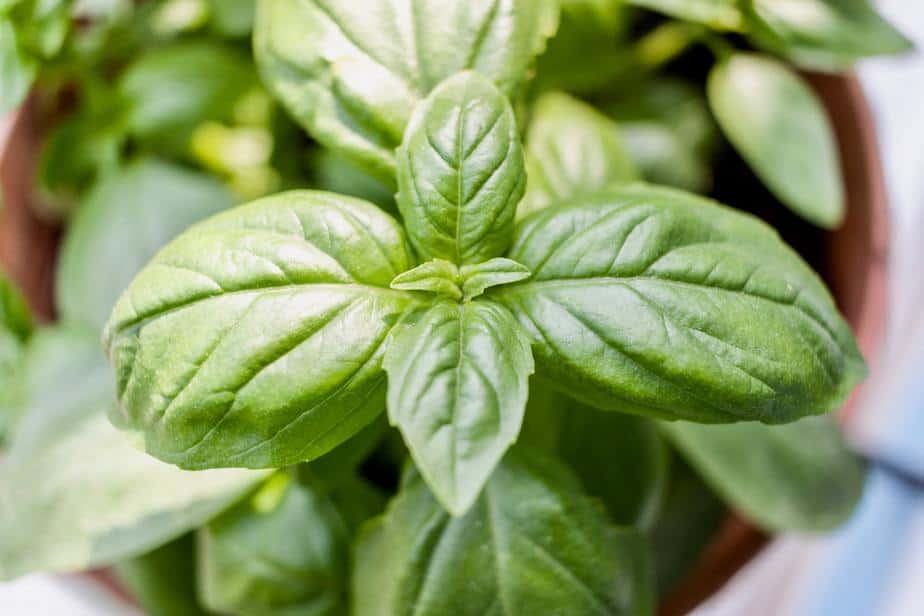
Basil is a wonderful herb plant for your kitchen. Not only will it repel flies, but it is an herb used for cooking numerous delicious recipes.
Basil is a rapid grower and emanates a lovely scent, so growing it on your kitchen windowsill will give you a bit of greenery, a sweet-smelling kitchen, and help you keep pesky flies at a distance.
You can even add about six ounces of basil leaves to four cups of boiling water in a spray bottle and make your own natural fly and insect spray.
Learn more about growing basil in AeroGarden indoor gardens.
2. Bay Leaves (Laurus nobilis)
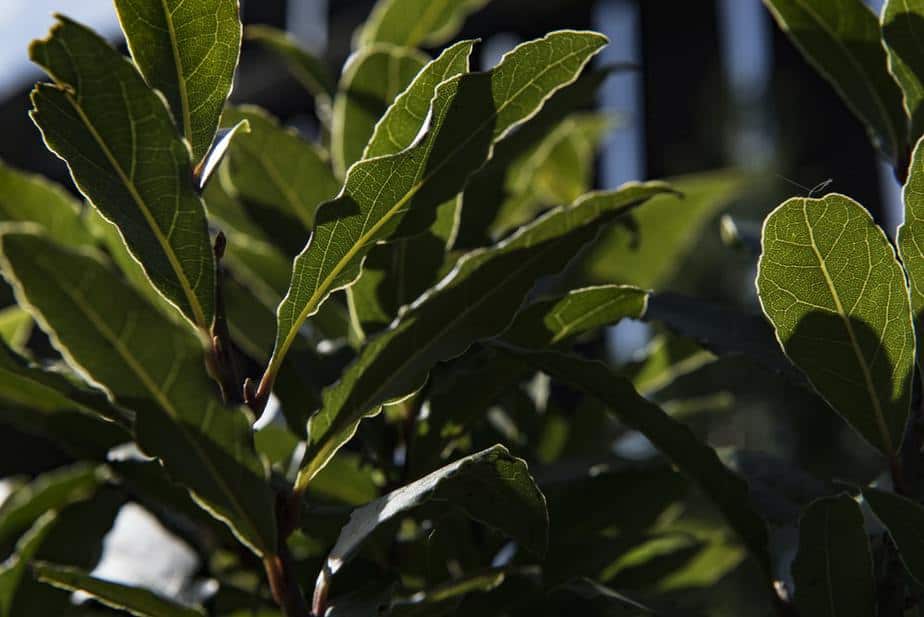
Used in soups, sauces, and oven-baked dishes, bay leaves also repel houseflies.
Bay leaves can be dried out and used on balconies or decks to repel not only flies, but other bugs and insects like ants and cockroaches as well.
Thanks to its pungent scent, the insects head in another direction. Dry bay leaves will last for several days before you need to replace them. They can be cultivated in full or partial sun in a moist soil bed.
3. Catnip (Nepeta cataria)
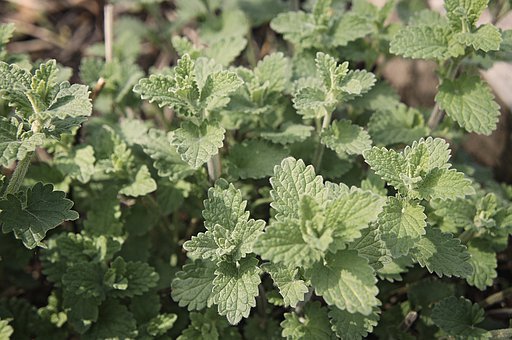
If you have cats in your family, this is a fun plant to cultivate, and your feline friends will love you for it.
Considered an herb, the catnip plant belongs to the mint family. It contains the compound Nepetalactone that attracts cats, but at the same time repels flies along with other bugs.
Growing to heights of three to four feet tall, it only requires occasional watering. Blooms are purple in hue and this herb can be dried, flaked, and sprinkled to repel insects.
4. Citronella (Cymbopogan)
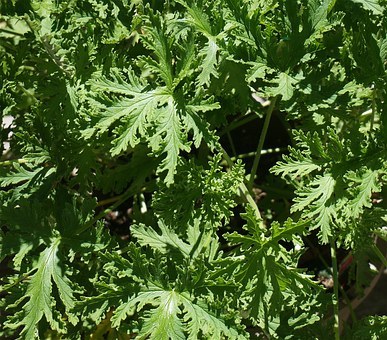
While usually cultivated as an outdoor plant, the Citronella plant does well if your home is warm.
Citronella needs bright sunlight, so the ideal position would be by a window. Rich potting soil and the occasional watering are all it requires to thrive.
The great thing about this plant is that it not only keeps flies at a distance, but repels mosquitoes. It is sometimes referred to as lemongrass.
Citronella candles like this one online are common sights on patios for their smell and ability to repel flies.
5. Lavender (Lavandula)
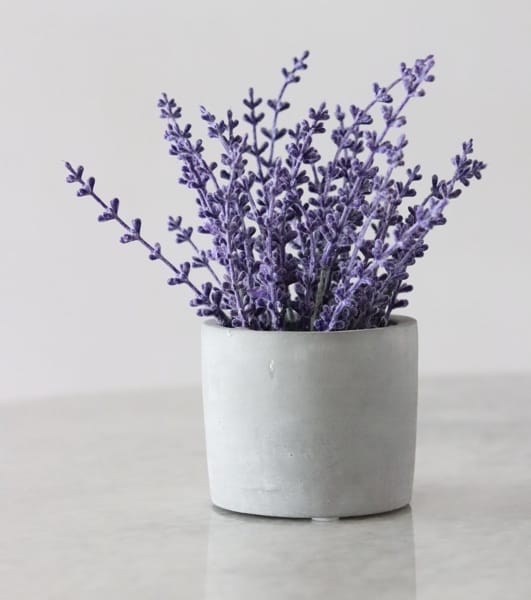
If you love the sweet smell of lavender, often dried and used in pouches for clothing drawers or for linens, why not try the Lavender Plant?
Lovely green stems with spikes of rich purple will repel not only flies, but gnats and mosquitoes too thanks to its lovely smell.
It needs a well-draining soil bed and a good amount of sun. You can snip stems to create miniature bouquets to place or hang around your home to repel insects.
Lavender oil is another oil that can be placed in a diffuser, and it dries well, so dried lavender flakes can be used in small bags to scent the room and repel flies.
6. Marigolds (Tagetes)
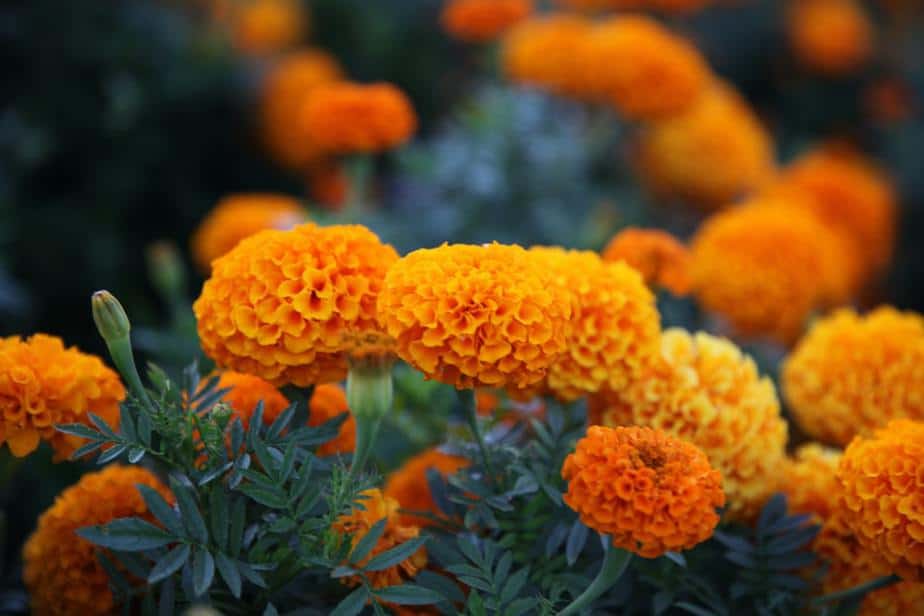
Marigolds cultivated in a flowerpot can be placed just about anywhere.
These plants repel flies due to their unpleasant scent from the compound Pyrethrum found in the plant. This plant’s roots are also appreciated because they repel nematodes thanks to Limonene.
Wherever you want to keep flies away, just position a container of these flowers. Near doors or windows, on tables, on porches, balconies, patios, or decks, marigolds will do the job.
Available in a variety of vivid colors, these lovely flowers will brighten any room. They require full sun and a well-draining soil bed.
7. Mint (Mentha)
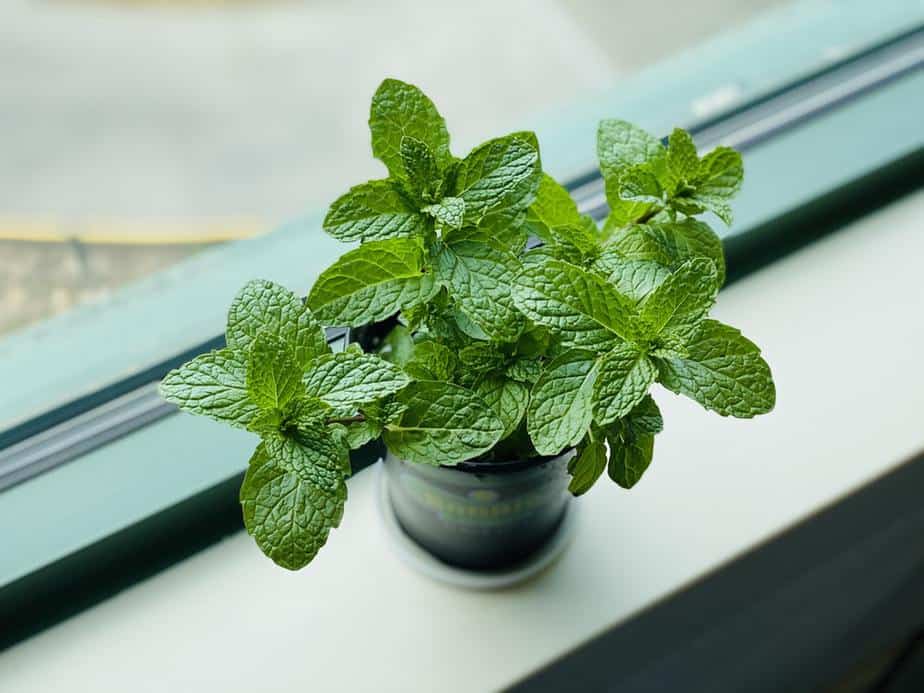
Mint is a very strong fly repellent. As an aggressive and rapid grower, you can plant it in containers, but it will need to be pruned regularly.
Mint has a strong taste and is used in both cooking and numerous beverages. Dried, crushed mint is also an effective cooking ingredient. It can be mixed with witch hazel or apple cider vinegar as a natural fly repellent.
Mint can also be a good rat repellent for your vegetable garden.
8. Parsley (Petroselinum)
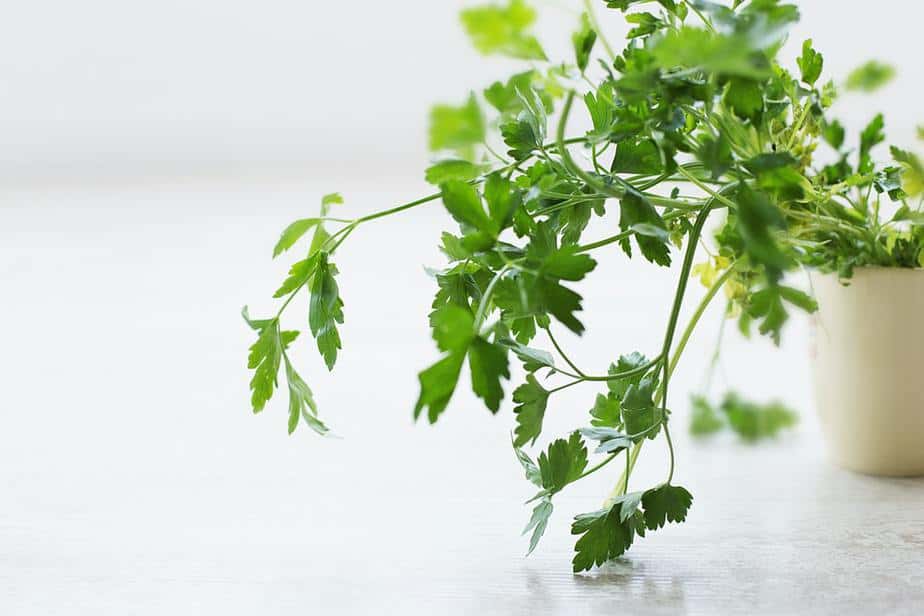
Parsley is a healthy herb and a popular ingredient used in both cooking and in salads.
Parsley not only repels flies, but snails and beetles as well. They’re also known to attract bugs that will eat other unwanted insects, including wasps.
Full to partial sun and rich moist soil is the ideal cultivation condition. It grows in clumps that can be snipped off to stimulate growth.
9. Rosemary (Rosmarinus officinalis)
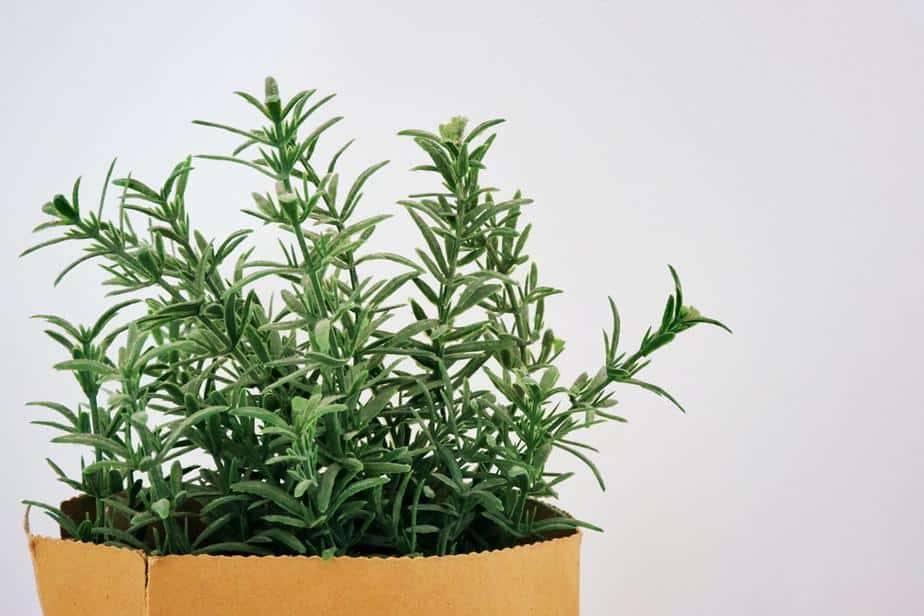
Rosemary is another great herb to cultivate in your kitchen window. It is a staple for cooks the world over.
The rosemary plant is beautiful and releases a scent that flies hate. It does well in just about any climate, can thrive in full or partial sun, and thrives as a container plant.
Rosemary oil can also be used in a diffuser to keep flies and insects at a distance.
10. Sage (Salvia officinalis)
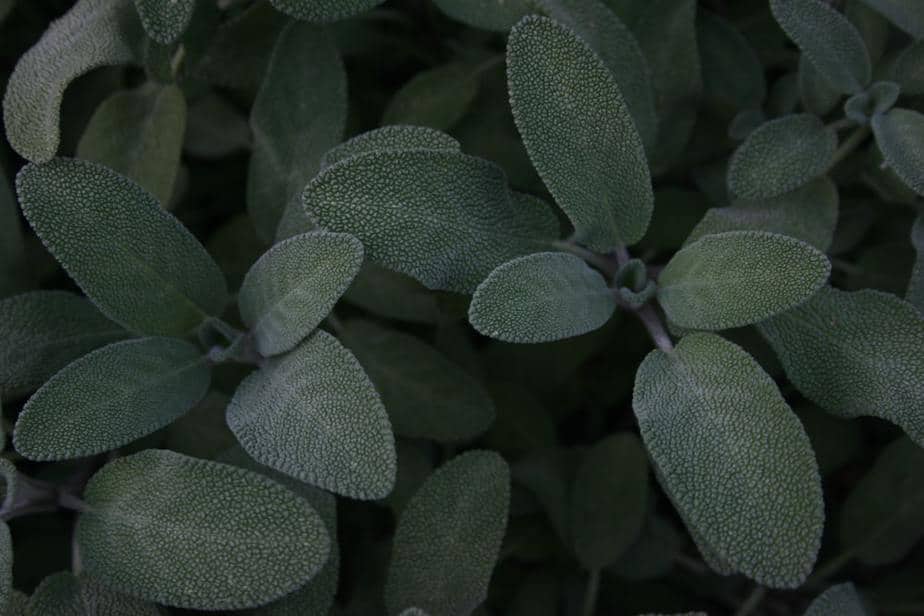
Sage is a perennial plant that is regularly cultivated in herb gardens and does very well as a container plant.
While it’s still growing on the stem, it will release a powerful scent that keeps flies at a distance. Leaves can be removed from the stems and crushed to release the scent, too.
Sage leaves can also be burned, which will allow the scent to emanate and keep insects at bay on warm summer evenings.
Sage plants like sunlight and prefer its soil bed to be kept lightly moist, not sitting in a pool of water.
11. Venus Fly Trap (Dionaea muscipula)
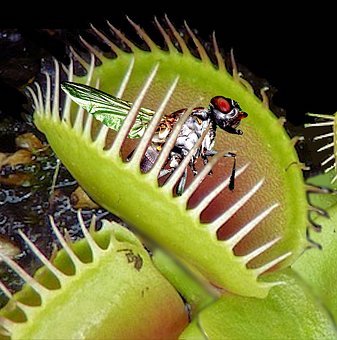
The name says it all. The Venus Flytrap is a carnivorous plant that will repel flies and ticks.
Its soil bed will need to be acidic and with good drainage as well as moderate sunlight, but it will dispose of insects that are the correct size for its trap.
- Learn more: How Much Water Does a Venus Flytrap Need?
The Venus flytrap’s nectar will attract a fly to land its leaf traps. Once the plant notices a fly, the leaves will close, trapping the fly. Digestive enzymes will then dissolve the fly for nourishment.
A great plant selection, your home will be free of flies, while feeding the plant at the same time.
12. Petunias
Petunias are used by most farmers for their pesticide properties since they’re known to be among the best natural pesticides available. Their popularity lies in their bright colors, making any room look beautiful.
Petunias are great at repelling asparagus beetles, leafhoppers, aphids, and squash bugs.
In addition to that, it doesn’t require any regular care. It just needs sunlight every day. Planting flowers where they get plenty of sun will help ensure their health and beauty for years to come.
13. Geraniums
Geraniums are great as a natural insecticide and a popular companion plant in many vegetable garden beds that have tomato plants.
If you love organic gardening, you may already have geraniums and flower beds nearby. The lemony, sweet fragrance repels flies, beetles, snails, and slugs.
Geraniums love dry climates with lots of sun to grow quickly.
Care Tips for Plants to Help Keep Flies Away
While every plant will have specific needs, it is important to identify these for the species that you are cultivating.
Pots and Containers for Plants That Keep Flies Away
Select the best container with good water drainage. Plant pots need holes in the bottom so excess water can drain, and they need to be the correct size.
Pots that are too small mean plants can easily become root-bound and fail. Pots that are too big will end up with waterlogged soil, because there are not enough plant root to absorb the water.
Soil and Growing Medium for Plants That Repel Flies
Choose quality potting soil or mix. Avoid using outdoor garden soil from your yard as it may already contain insects, fungus, or bacteria.
Water for Plants That Repel Flies
Water plants in moderation. If you water too much, your plant will drown, but if you water too little, it will wither and die.
Test the dryness level of the top couple of inches of soil with your finger. If it feels dry and a bit crumbly, it’s probably time to water.
Light for Plants That Repel Flies
The amount of light a particular plant requires varies, so you’ll want to research plants you’re looking at growing. Some plants need full sun exposure all day, while others will do better in partial shade.
Pets at Home
Pets and plants don’t usually mix. Keep pets away if you’re growing poisonous houseplants. Pets can destroy plants while digging or playing, or they may eat a plant and ingest poisonous parts, resulting in a trip to the veterinarian.
Information and Growing Tips
Research about the best indoor plants and how to grow them, so you can grow them successfully to repel flies. Once you’ve selected a plant or plants, learn as much as you can about raising them, including soil types, sun requirements, preferred temperatures, and watering needs.
Plants That Repel Flies Final Thoughts
These plants will repel pesky houseflies while adding to your home décor, a balcony, deck, or patio. Many emanate lovely scents to naturally perfume the room they are located in.
All of these plants can be cultivated individually or grouped together to create a kitchen herb garden or a green corner in your home, office, or place of business.
By selecting plants that repel flies, you’ll be keeping insects at a distance while adding beauty to your living space. And if you are passionate about cooking, you’ll have your own supply of fresh herbs ready at a moment’s notice.
Learn more about plants with these articles:













